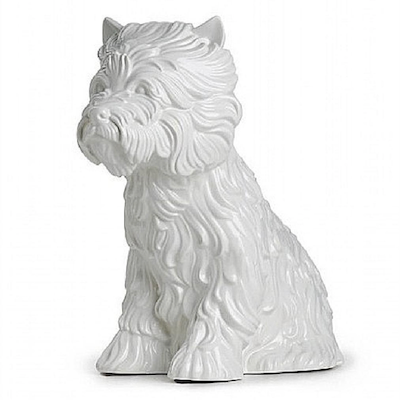
Details
Artist
Styles
Silkscreen // Robert Indiana's Decade Autoportrait '61 (2001) is a silkscreen print that reflects his characteristic use of bold typography, graphic design, and vibrant color. The artwork features a circular composition filled with symbols and text, including the words EAT, BOWERY, and 71, alongside a prominent star and the acronym IND. The arrangement of these elements within a limited palette of red, blue, black, and yellow gives the piece a dynamic, almost poster-like aesthetic. The print plays with ideas of identity and place, referencing locations and themes significant to Indiana’s personal and artistic journey. This self-referential work ties back to his exploration of American iconography and pop culture.
Decade Autoportrait '61, 2001
form
Medium
Size
94 x 92.4 cm
- Inches
- Centimeters
Edition
Price
- USD
- EUR
- GBP
Details
Artist
Styles
Silkscreen // Robert Indiana's Decade Autoportrait '61 (2001) is a silkscreen print that reflects his characteristic use of bold typography, graphic design, and vibrant color. The artwork features a circular composition filled with symbols and text, including the words EAT, BOWERY, and 71, alongside a prominent star and the acronym IND. The arrangement of these elements within a limited palette of red, blue, black, and yellow gives the piece a dynamic, almost poster-like aesthetic. The print plays with ideas of identity and place, referencing locations and themes significant to Indiana’s personal and artistic journey. This self-referential work ties back to his exploration of American iconography and pop culture.
- Recently Added
- Price (low-high )
- Price (high-low )
- Year (low-high )
- Year (high-low )
Robert Indiana
The American Dream (High Ball Redball Manifest), 1996
Limited Edition Print
Silkscreen
USD 3,700
Robert Indiana
The American Dream (Metamorphosis Of Norma Jean Mortenson), 1996
Limited Edition Print
Silkscreen
USD 3,750
Robert Indiana
The Hartley Elegies: The Berlin Series - KvF 5, 1990
Limited Edition Print
Serigraph
USD 7,900
Robert Indiana
Susan B. Anthony - Mother Of Us All Portfolio, 1977
Limited Edition Print
Lithograph
USD 1,350
Robert Indiana
Lilian Russell - Mother Of Us All Portfolio, 1977
Limited Edition Print
Lithograph
USD 1,350
Robert Indiana
Jo The Loiterer - Mother Of Us All Portfolio, 1977
Limited Edition Print
Lithograph
USD 1,350
Robert Indiana
Henrietta M. - Mother Of Us All Portfolio, 1977
Limited Edition Print
Lithograph
USD 1,350
Robert Indiana
Gertrude Stein - Mother Of Us All Portfolio, 1977
Limited Edition Print
Lithograph
USD 1,350
Robert Indiana
Constance Fletcher - Mother Of Us All Portfolio , 1977
Limited Edition Print
Lithograph
USD 1,350
Robert Indiana
Angel More - Mother Of Us All Portfolio , 1977
Limited Edition Print
Lithograph
USD 1,350
Robert Indiana
The Hartley Elegies: The Berlin Series- KvF IV, 1990
Limited Edition Print
Serigraph
USD 7,900
Robert Indiana
The Hartley Elegies: The Berlin Series - KvF III, 1990
Limited Edition Print
Serigraph
USD 7,900
Robert Indiana
The Hartley Elegies: The Berlin Series - KvF I, 1990
Limited Edition Print
Serigraph
USD 7,900
Robert Indiana
The American Dream (One Indiana Square), 1996
Limited Edition Print
Silkscreen
USD 3,700
What is art fabrication?
Art Fabrication is a process used in the production of technically challenging or large-scale artworks. It occurs when a designer or artist is unable to fully realize their concept or design on their own and seeks assistance from a fabrication studio. These studios are equipped with specialized machinery, resources, and skilled labor necessary to execute complex art projects to a high standard.































































